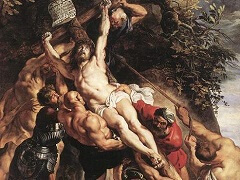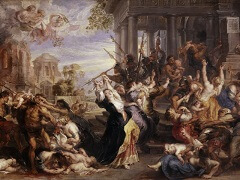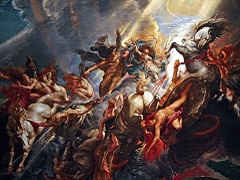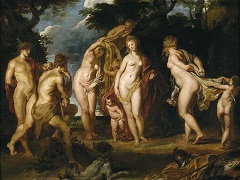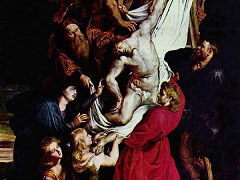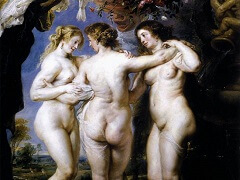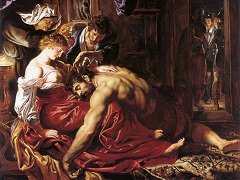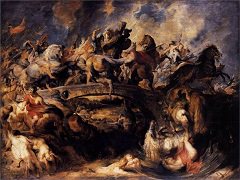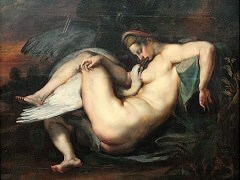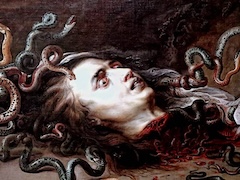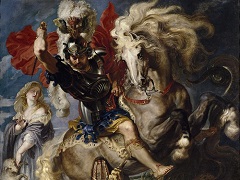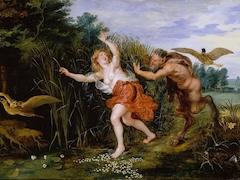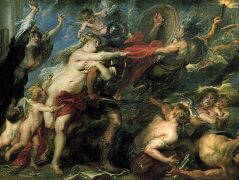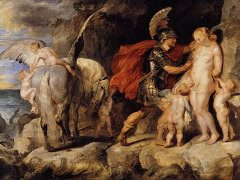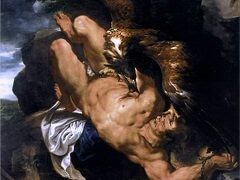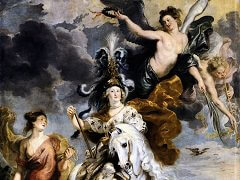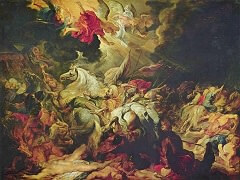Neptune Calming the Tempest, 1635 by Peter Paul Rubens
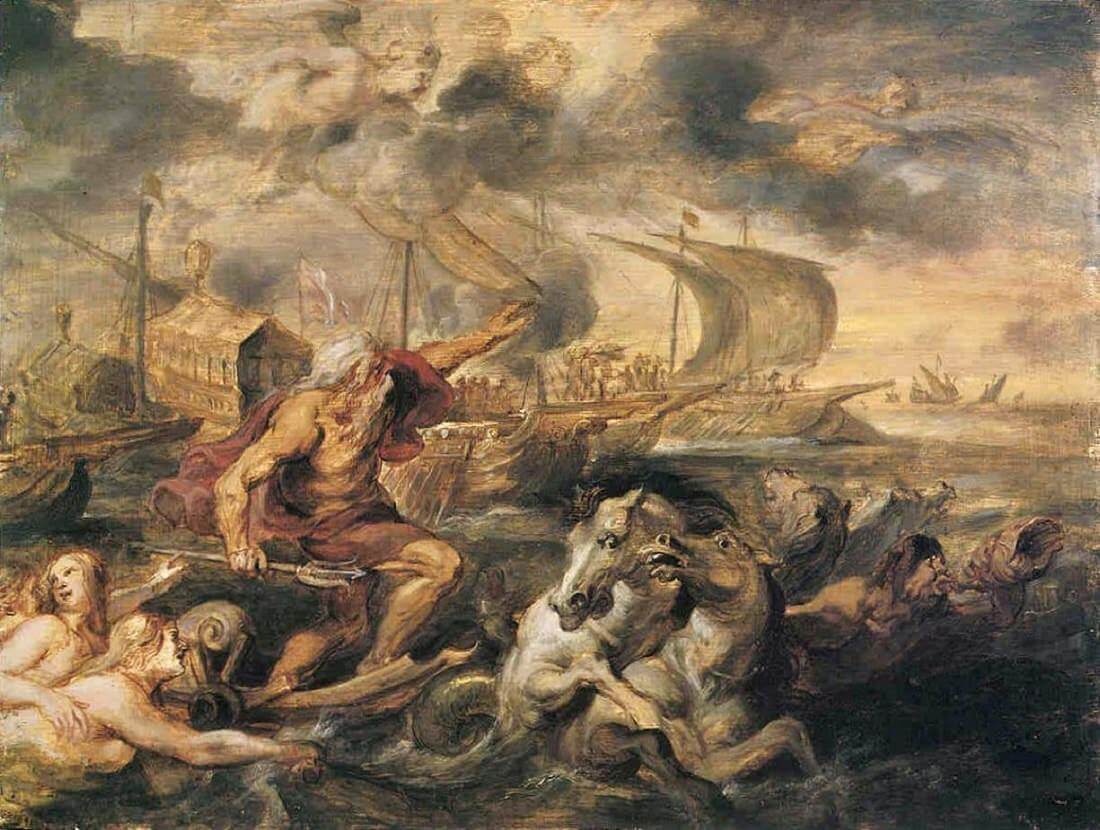
NEPTUNE, the god of the sea, rides over a stormy sea in a shell drawn by sea horses (hippocampi). His progress is announced by a triton blowing a large conch shell. Attending the god's car are three swimming nereids. His long white hair and beard flowing, Neptune half stands on the shell and gestures broadly at three personifications of the wind above him. Beyond the sea god are several sailing vessels and triremes representing the fleet that the Cardinal Infante Ferdinand took from Barcelona to Genoa in April 1633. During his crossing, Ferdinand encountered a storm which forced him to seek refuge in the tiny harbor of Codaques for thirteen days. The prince's odyssey was recorded, complete with the obligatory literary flourishes and exaggeration, by Don Diego de Aedo y Gallert in a book published in Antwerp in 1635 (complete with a title page designed by Rubens) which probably inspired Rubens's conception of the theme.
In this painting, which was possibly begun by Rubens but undoubtedly completed by assistants, Neptune is a larger and more commanding presence, all the figures are grouped more tightly, and the personifications of the winds are given more form and detail. Now clearly identifiable, they are: Auster, the south wind (who - on the authority of Lucretius and Virgil - holds a thunderbolt), and Zephyr, the west wind, who together gustily expel the northwind, Boreas, now rendered (following Pausanias) with serpentine legs. The south and west winds naturally were favorable to Ferdinand's journey from Barcelona to Genoa. Millard Meiss discussed a curious technological detail that appears in both the finished painting in Dresden and the Fogg sketch, namely the tiny paddle on the side of Neptune's shell. This seems to descend from The Triumph of Galatea by Raphael in the Villa Farnesina, which Rubens had undoubtedly seen in Rome and could recall through Marcantonio Raimondi's engraving. Held first pointed out that Virgil's text describes how Neptune "allays the Flood, and on light wheels (rods levibus) glides over the uppermost waters." Martin also correctly observed that Rubens's "agitated sea horses" are probably inspired by Raphael's composition and may also acknowledge a print by Bonasone after Perino del Vaga.

